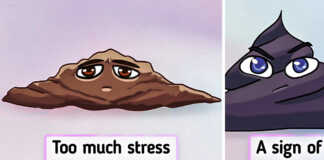Sometimes the price we pay as customers for a product is ridiculously high, as much as 2,000% more than we should pay for a product, but we pay the price anyway. Design, marketing, and transportation can add up to the retail costs of a product, but some companies take advantage of our ignorance and charge us, either because we don’t know how cheap it is to make them or because we ignore the fair price.
The Elite Indian will try to open your eyes about some products that cost way more than what it costs to produce them.
1. Diamond rings

Diamond engagement rings weren’t a thing until the 1930s, when a company named De Beers came up with a brilliant marketing strategy to spark their diamond sales. They convinced couples that the more a man paid for a diamond engagement ring, the more he showed his future wife that he loved her. He would be buying her something rare and unique, like her. But diamonds aren’t all that rare, nor are they that expensive.
De Beers is one of the few and the biggest diamond companies, almost a monopoly that controls the supply and prices of the stones through its government allies. So, a man pays on average $6,000 for an engagement ring, when the price could actually be closer to $500.
2. Water bottles

Americans purchase an average of 50 billion water bottles a year, that’s around 20,000 bottles per second, and all of them are entirely overpriced. The water supply is very clean in the United States, so people could fill their bottles at home with tap water. It would be essentially the same, as long as you don’t live in a very polluted area, because many companies actually just pack tap water and sell it.
But people are under the wrong impression that tap water is contaminated and bottled water isn’t, as a recent poll revealed, so they could keep spending $2.50 per bottle when they could enjoy it for $0.002 at home.
3. Tickets from travel websites
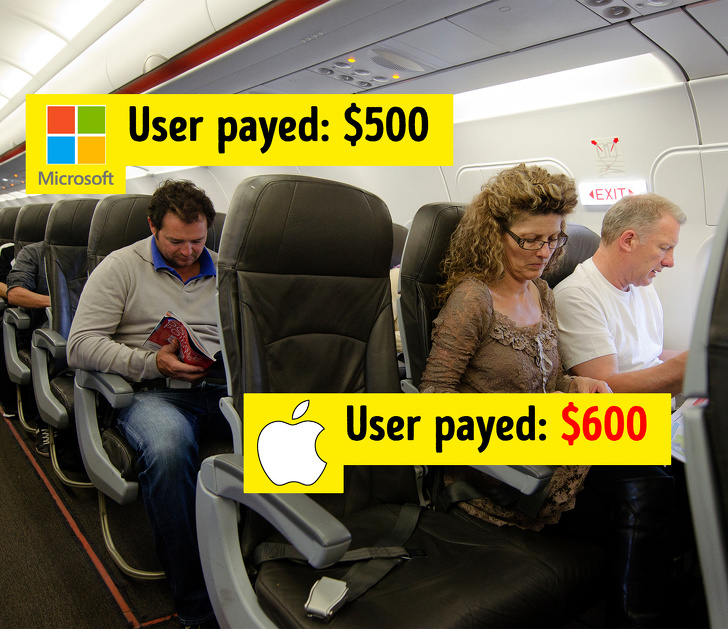
Businesses use cookies and other types of data to track your searches, spending habits, and the brands of technology you use, in order to show you the price they think you should pay for an airline ticket. They see how many times you’ve looked up that flight, how much you’ve spent before, and they show you personalized higher prices if you’re using a MAC computer.
This is why 2 people can buy a ticket and spend $1,000 and $500 for the same flight . To avoid this, clear your history and cookies and try to change your device before searching for a ticket for your next vacation.
4. Potato chips and other snacks in a bag
pic.twitter.com/x6D34F8Vgr
— sheik (@sheikzelda7) claim that the amount of air inside a bag of chips keeps the chips fresh and functions as a cushion throughout transportation to avoid crushing them. The air is nitrogen, a gas found in the air that doesn’t compromise the safety of the chips.
But even though some air is necessary, around 42% of the bag, some companies increase that number to up to 72% air, leaving you with fewer potato chips to enjoy. To avoid this, read the label to check the amount of snack you’ll be left with once you open the bag.
5. Funeral homes
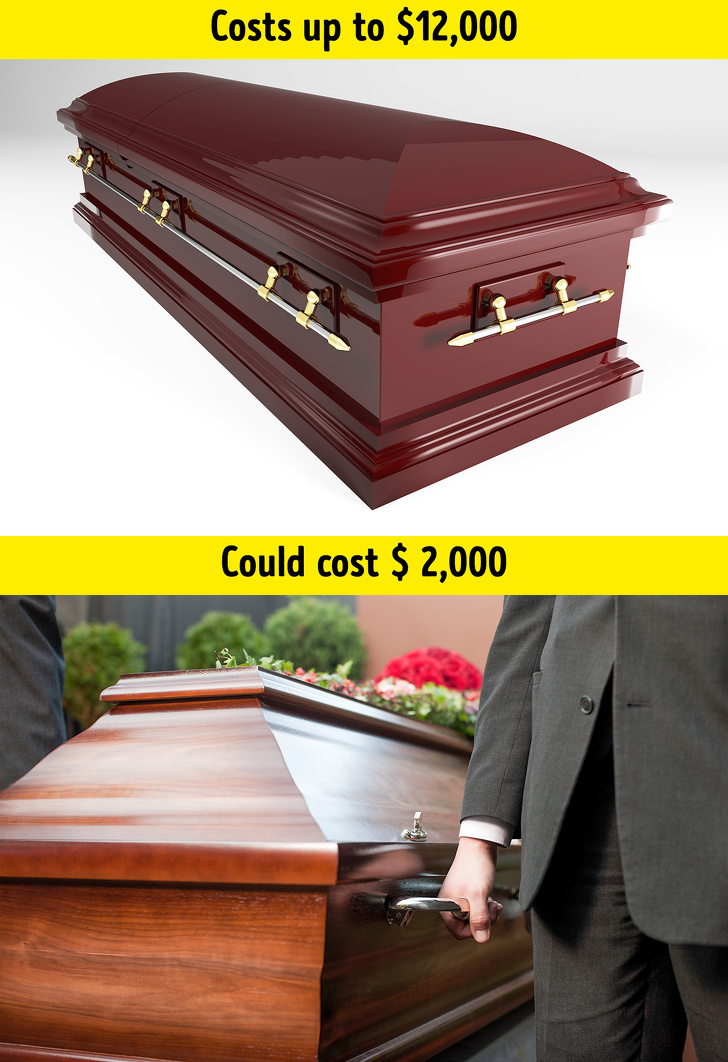
© Depositphotos.com
Funeral costs range between $7,000 to $12,000, but in reality they could cost only a fraction of that price if it weren’t for unnecessary practices and the giant corporations behind them.
The practice of embalming, which isn’t required by law, is sold as a way to dignify the deceased and to keep everything clean. But the World Health organization explained that bodies don’t pose a risk to human health and they could easily freeze the body to maintain it. Funeral homes also display the most expensive caskets, while hiding the cheaper ones, to convince relatives to purchase the first ones.
6. The lottery
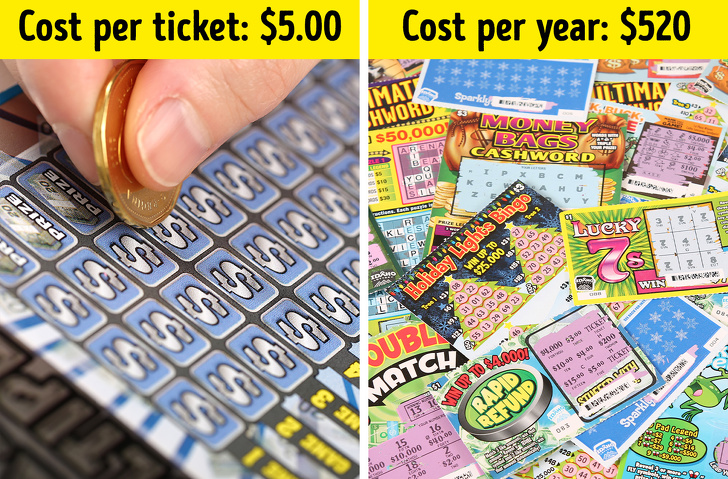
© Depositphotos.com
You’re around 250 times more likely to be struck by lightning in any given year, than win the lottery. The odds of winning one American Mega Millions jackpot, for example, are 1 in 302.6 million. There is almost no chance that you’ll get that money and almost every chance that you’ll lose all of it. If you buy 2 — $5 tickets, twice a week, your total loss over a year would be $520.
The chances of winning the top prize are so minimal, that the few dollars you pay for the ticket are just money thrown down the drain. Especially because some companies continue printing and selling tickets for prizes that have already been distributed. You’d be better off investing that money in any stock.
7. Coffee to go

The amount of ice in your Frappuccino is larger than the rest of the other more expensive ingredients like the coffee, syrup, milk, spices, and cream. That seems a bit unfair, considering ice is essentially costless for Starbucks. What could cost you less than a dollar, ends up costing you around 5. But ice isn’t the only problem.
Major chains like Starbucks offer different sizes of coffees like Venti and Grande, but baristas will pour the same amount of espresso shots in your hot drink.
8. Sneakers

It costs Nike $28.50 to manufacture a $100 pair of sneakers and about $16 to produce the luxurious Air Jordans in China, which they then sell for over $400. Prices have to be inflated to account for marketing, logistics, and other costs, but a 2,500% markup in price feels like they’re really overestimating.
9. College textbooks

© Depositphotos.com
College in America is really overpriced, compared to higher education around the world. And as if that wasn’t enough, textbooks prices are through the roof — the average student will be expected to spend almost $1,300 per year on them.
They cost about 10% of their selling price to print, at around $10 to $11, but usually cost $100+. On top of that, professors also list their own books or those of their friends as required reading, adding to this unfair problem.
10. Graphing calculators
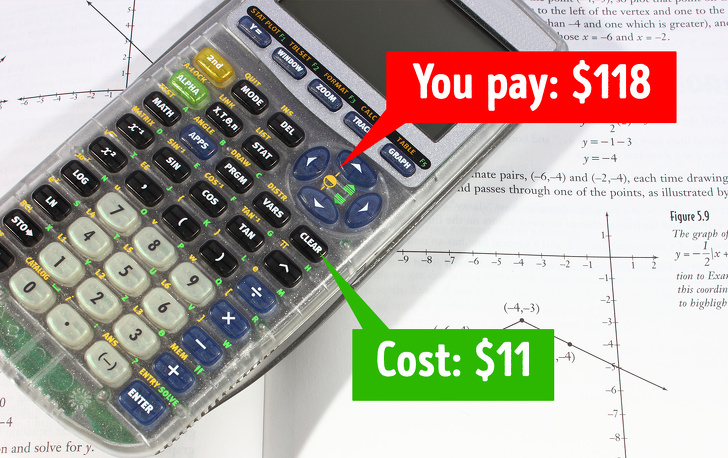
As if college textbooks weren’t already expensive, if a student needs a graphing calculator, they’ll be expected to pay around $100. The main manufacturer of calculators, Texas Instruments, has monopolized this market, allowing it to put high prices on its products.
The average calculator costs $15 to $20 to manufacture, but it’s sold for as much as 6 times that cost. But college students still have to purchase them, since many of their college books pair mathematical exercises and illustrations with some calculator editions, like the TI-83.
11. Printer cartridges
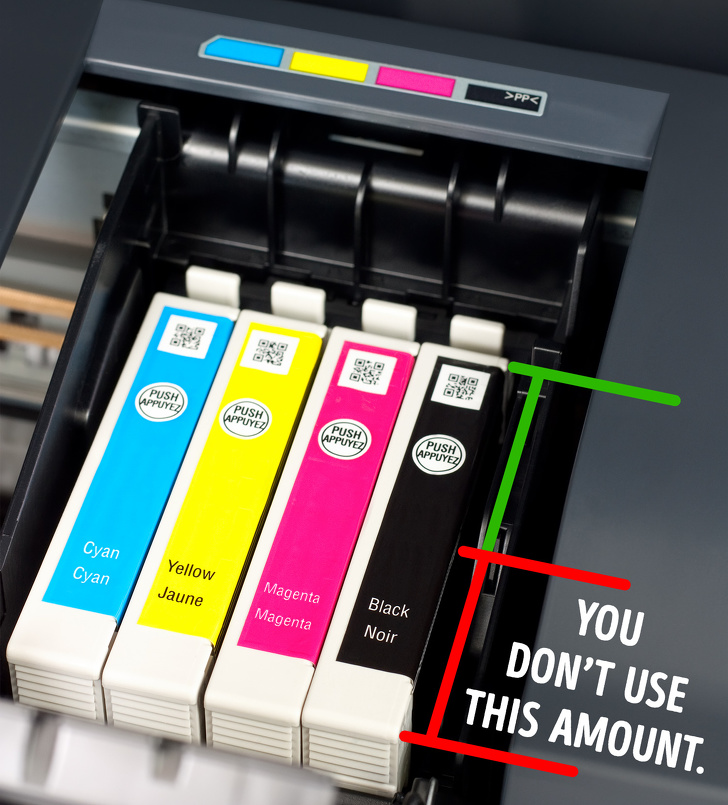
Technological corporations may say that their high profit margins that come from printer cartridges allow them to do more research and project development, but that doesn’t explain some other issues. For example, every time you buy a printer cartridge you’ll pay between $15 to $50 or more, when they’re production cost is closer to $5. What’s more, half of the ink in that little plastic package will never be used for printing and even with an ink supply, your printer will refuse to operate due to a lack of ink.
The truth is, it’s a strategy used by electronics manufacturers to sell you cheap printers knowing in advance that their biggest profits will be made on the accessories, like ink.
Do you use any of these products regularly? Would you stop buying some of them? Tell us which and why in the comment section!
Preview photo credit Alex Hussein / Pexels








